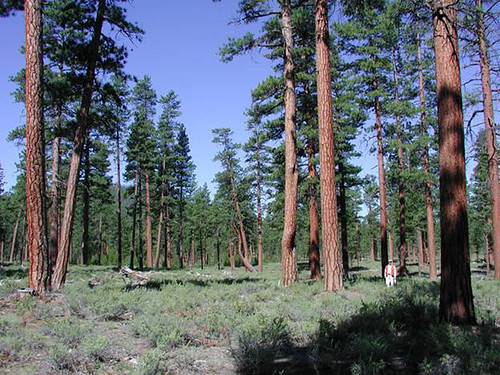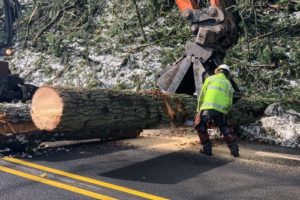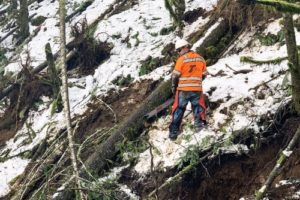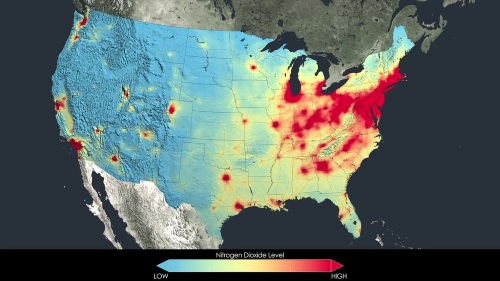A roundup of headlines curated for state transportation environmental professionals
FEDERAL ACTION
Ranchers, conservation groups unhappy with the new clean water rule, but for different reasons – NM Political Report
Buffett-backed giant solar project near Las Vegas wins Trump’s blessing – Los Angeles Times
Green Groups Ask D.C. Circuit to Uphold Pollution Safeguards for Freight Trailers – Environmental Defense Fund (Press release)
Lawsuit: US plan for Indiana forest could taint water supply – Daily Independent
Trump Administration Waives Environmental Safeguards to Fast-Track 69 Miles of Border Fence Construction – Government Executive
COVID-19
Proposed Phase 4 COVID-19 Relief Bill Contains $15B for State DOTs – AASHTO Journal
More People Turning to Cars Because of Fears of Coronavirus Infection on Public Transit – Weather Channel
COVID-19 Will Exacerbate Rural Transportation Funding Needs, TRIP Finds – Transport Topics
How Will Americans Commute After Lockdowns End? – CityLab
Advisory Council on Historic Preservation Approves FEMA Section 106 Emergency Procedures for COVID-19 Emergency/Disaster Response Undertakings – Insurance News Net
NEPA
Public Strongly Opposes CEQ’s National Environmental Policy Act Proposal – EHS Daily Advisor
INFRASTRUCTURE RESILIENCE AND SUSTAINABILITY
Illinois to ‘Fast Track’ $25M in Infrastructure Grants – AASHTO Journal
Transformative solar power agreement will help Emory reduce greenhouse gas emissions – Emory News Center
New Jersey Makes Significant Commitments to Transportation Electrification – ActNews.com
Changes for 2020 Atlantic hurricane season: New storm surge map, 60-hour forecast message – Times-Picayune
AIR QUALITY
Many cities around the globe saw cleaner air after being shut down for COVID-19. But not Chicago. – Chicago Tribune
Cleaner Air Is Actually Hobbling California’s Climate Fight – Bloomberg Green
Lawsuit Targets Arch Coal’s Illegal Air Pollution at Colorado Coal Mine – Center for Biological Diversity (Press release)
Has the pandemic cleaned up our air? Answers could lie on your doorstep – WHYY
ENVIRONMENTAL JUSTICE
House Dems’ stimulus bill aims to fight coronavirus with ‘environmental justice grants’ – Fox News
Restarting Florida’s economy by weakening water quality and growth management is a bad idea | Column – Tampa Bay Times (Opinion)
NATURAL RESOURCES
Reusing wastewater at Minnesota’s truck stations could help conserve state’s water resources – Catalyst
In a First, Renewable Energy Is Poised to Eclipse Coal in U.S. – New York Times (account required)
Utah Inland Port Authority signs deal with Rocky Mountain power for renewable energy – Salt Lake Tribune
Navigable Waters Protection Rule (formerly the Clean Water Rule) – JD Supra
Panel to consider petition seeking Pecos River protections – KOB
For the first time, Washington will regulate Columbia-Snake River dams if they violate federal pollution rules – Inlander
CULTURAL RESOURCES
What’s a historic district, anyway? – Greater Greater Washington
How Historic Preservation Shaped the Early United States – Smithsonian Magazine
HEALTH AND HUMAN ENVIRONMENT/ACTIVE TRANSPORTATION
Coronavirus News: 58 days since last pedestrian killed in NYC; longest stretch ever recorded: Officials – WABC
Transportation Ushers In A New Age Of Agile Experimentation – Forbes
Ten Cities Recognized with “Walk Friendly” Designation – Walk Friendly Communities
Uncharted Territory: Building New Pathways To E-Mobility Resilience – Forbes
Boston is planning to repurpose streets for pedestrians during the coronavirus outbreak – Boston.com
TRB RESOURCES/ANNOUNCEMENTS
Paths to biking, walking improvements supported by wealth of research – TRB
TRB Webinar: Traffic Trends and Safety in a COVID-19 World – TRB
FEDERAL REGISTER NOTICES
National Oil and Hazardous Substances Pollution Contingency Plan; National Priorities List: Partial Deletion of the Omaha Lead Superfund Site – EPA (Proposed Rule)
Withdrawal of Certain Federal Water Quality Criteria Applicable to Washington – EPA (Final Rule)
Final Flood Hazard Determinations (LA & WA) – FEMA (Notice)
Proposed Flood Hazard Determinations (MI) – FEMA (Notice, correction)
Changes in Flood Hazard Determinations (AR, CO, CT, FL, KY, GA, MA, MS, OK, NC, TX, VA) – FEMA (Notice)
Emergency Management Priorities and Allocations System (EMPAS) – FEMA (Interim Final Rule)
National Wetland Plant List – Army Corps of Engineers (Notice)
Allocations of Cross-State Air Pollution Rule Allowances From New Unit Set-Asides for 2020 Control Periods – EPA (Notice of Data Availability)




